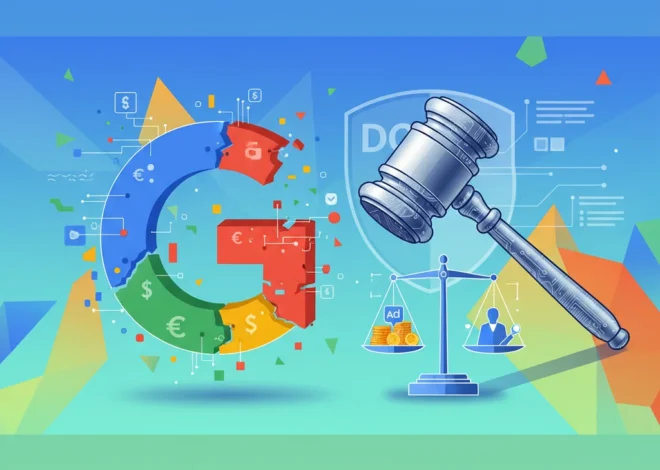The Civil War Inside Meta: Why a Top AI Chief’s Exit Signals a New Era for Artificial Intelligence
In the high-stakes world of Big Tech, a senior executive’s departure is rarely just a simple farewell. It’s often a tremor that signals a deeper seismic shift in strategy. The recent news that Jérôme Pesenti, Meta’s VP of AI, is leaving the company after four years is exactly that—a pivotal moment that pulls back the curtain on the intense internal debate shaping the future of artificial intelligence not just at Meta, but across the entire industry.
According to the BBC, Pesenti’s exit comes amid disagreements with fellow engineers and a major internal restructuring of Meta’s AI divisions. This isn’t just corporate drama; it’s the manifestation of a fundamental conflict that every major player in the AI space is grappling with: the battle between pure, open-ended research and the relentless pressure to ship products.
To understand why this matters to everyone from developers and entrepreneurs to the general public, we need to look beyond the headline. This is a story about the soul of AI development, the future of open-source innovation, and Meta’s high-stakes gamble to reclaim its throne in the AI race.
The Architect of Unity: Who is Jérôme Pesenti?
Before we dive into the “why,” let’s understand the “who.” Jérôme Pesenti is no small figure. He was brought into Meta (then Facebook) in 2018 with a clear and challenging mandate: to unify the company’s sprawling and often siloed AI efforts. With a background leading the development of IBM’s Watson, Pesenti was tasked with bridging the gap between the company’s two major AI powerhouses.
On one side, you had FAIR (Fundamental AI Research), the rockstar academic-style lab co-founded and led by the legendary Yann LeCun, one of the three “godfathers of AI.” FAIR’s mission was to push the boundaries of science, publish groundbreaking papers, and pursue knowledge for its own sake. Their currency was peer-reviewed prestige and long-term breakthroughs.
On the other side, you had AML (Applied Machine Learning), the massive engineering division responsible for using machine learning to power Meta’s products—from the Facebook news feed and ad targeting to content moderation and Instagram’s recommendation algorithms. Their currency was immediate business impact and scalable software solutions.
Pesenti’s job was to make these two worlds talk, to create a pipeline from brilliant research to tangible product. For a time, it worked. But the landscape has changed dramatically. The meteoric rise of OpenAI’s ChatGPT and the ensuing AI arms race has forced every company to re-evaluate its strategy. The leisurely pace of academic research, it seems, is no longer a luxury Big Tech feels it can afford.
From Failed Gambit to Market Disruptor: How Valve's Console Dream Redefined Tech Innovation
The Great Divide: Research Purity vs. Product Pragmatism
The “disagreements” mentioned in Pesenti’s departure are symbolic of this core tension. It’s a philosophical divide over the very purpose of an industrial research lab. Should it be a protected space for pure innovation, or an engine room for the core business? This isn’t a new debate, but the generative AI boom has cranked up the pressure to an all-time high.
To clarify the two opposing philosophies at play, let’s break them down:
| The FAIR Approach (Fundamental Research) | The Applied AI Approach (Product-Driven) |
|---|---|
| Goal: Scientific breakthrough and long-term understanding. | Goal: Immediate business value and user-facing features. |
| Key Metric: Published papers, academic citations, open-source model releases. | Key Metric: Revenue impact, user engagement, product performance KPIs. |
| Culture: Academic, bottom-up, researcher-led exploration. | Culture: Engineering-focused, top-down, deadline-driven execution. |
| Example Output: PyTorch, a foundational open-source programming framework. | Example Output: Instagram’s algorithm for recommending Reels. |
| Risk: Research may never lead to a profitable product. | Risk: Focus on short-term wins may lead to falling behind on foundational tech. |
This clash is at the heart of Meta’s reorganization. The company is reportedly dissolving Pesenti’s overarching AI group and creating a new, centralized AI unit where research and product teams will be more tightly integrated. Yann LeCun, while remaining Chief AI Scientist, will report directly to the Chief Product Officer. This is a clear signal: at Meta, product now officially rules the AI roost.
What Meta’s AI Shake-Up Means for the World
This isn’t just an internal memo for Meta employees. The ripple effects of this strategic pivot will be felt across the tech ecosystem, impacting startups, developers, and even raising questions about cybersecurity and the future of open-source AI.
For Developers and the Open-Source Community
Meta, largely through FAIR and Yann LeCun’s influence, has been a champion of open-source AI. Their release of PyTorch, one of the world’s leading machine learning frameworks, and powerful models like Llama 2, have been a godsend for developers and startups who can’t afford to build foundational models from scratch. A more product-centric Meta raises a critical question: will this commitment to open source continue with the same fervor?
If the primary goal is to build features that provide a competitive moat for Meta’s products, the incentive to share the underlying technology weakens. The community will be watching closely to see if future model releases are as open and permissive as they have been in the past. A shift away from this could significantly alter the landscape for AI automation and development, pushing more power back into the hands of a few large, closed-platform players.
Silicon Desert vs. Dragon's Memory: The High-Stakes Global Battle for Chip Supremacy
For Entrepreneurs and Startups
On one hand, a more focused and aggressive Meta AI is a formidable competitor. They have the data, the talent, and the cloud infrastructure to dominate any market they target. Any startup building AI-powered consumer social features is now on high alert.
On the other hand, this could create new opportunities. If Meta’s internal research engine slows its output of foundational, open-ended discoveries, it could leave a vacuum for nimble startups to fill. The next major architectural breakthrough in artificial intelligence might not come from a Big Tech behemoth, but from a small, focused research startup that has picked up the torch of pure R&D.
For the Future of AI Innovation
Pesenti’s departure and the subsequent reorg symbolize the “industrialization” of AI. The era of whimsical exploration is giving way to the era of the assembly line. This is a natural part of any technology’s maturation cycle. It leads to more robust, reliable, and accessible products—think of the transition from hobbyist computers to the polished devices we use today.
However, it also carries the risk of homogenization. When everyone is focused on the same product metrics and chasing the same trends (like large language models), you can lose the diverse, unexpected breakthroughs that come from undirected research. The industry needs both—the reliable SaaS platforms and the wild, unpredictable scientific leaps. Meta’s move tilts the balance, and it remains to be seen how the rest of the industry will respond.
The new centralized group will be led by Joelle Pineau, a highly respected researcher, but the reporting structure to the product side is the key detail. This move is a clear statement that Meta intends to directly challenge the product velocity of competitors like OpenAI and Google (source).
The Ghost in the Machine: How a "Failed" Console Paved the Way for Today's Tech Innovation
Conclusion: An End of an Era, The Start of a Race
Jérôme Pesenti’s exit from Meta is far more than a personnel change. It’s a landmark event that signals the end of a particular era in Big Tech AI research and the beginning of a new, more pragmatic, and arguably more aggressive one. Meta is pushing all its chips to the center of the table, betting that a tightly integrated, product-focused AI strategy is the only way to win the current race.
This decision resolves a long-standing internal tension but opens up a new set of external risks and questions. Will this new structure unleash a new wave of innovation that wows users and dominates the market? Or will it stifle the very research culture that made Meta an AI powerhouse in the first place? For developers, entrepreneurs, and anyone invested in the future of technology, the answer will shape the landscape for years to come.


